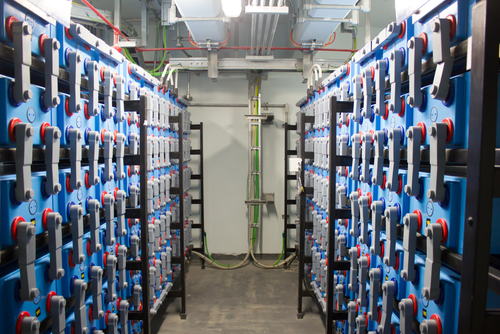Utility energy storage interconnected capacity saw 45 pct growth in 2018: SEPA

A new Utility Energy Storage Market Snapshot report from the Smart Electric Power Alliance (SEPA) released this week shows a flourishing market that’s coming off a year of nearly 45 percent growth in interconnected capacity, as investor-owned utilities (IOUs) deployed the most storage of any utility type.
“Energy storage deployments are accelerating, driven by increasingly compelling economics, favorable state policies, and residential programs in California, Hawaii, and Vermont,” Mac Keller, co-lead author of the report and research associate at SEPA, said. The report also noted that underpinning the market is the continuation of research and development on both existing commercial storage technologies and new technologies such as flow batteries that can rapidly charge and deliver consistent long-term performance.
Over all, 2018 ended with 760.3 megawatt hours (MWh) of energy storage interconnected and driving the cumulative energy storage total capacity upward to 1,966.6 MWh throughout the United States.
Utility-supply storage remains the largest market segment with nearly 395 MWh added in 2018, an increase of 11.3 percent from 2017.
IOUs made up 64.3 percent of the total market last year, with California’s IOUs leading the way in energy storage interconnection nationally, according to the report. Southern California Edison accounted for nearly one-fifth of all the energy storage systems interconnected across the country in 2018.
Residential storage deployment was another highlight of the report, with the sector experiencing 500 percent growth in 2018, fueled by supportive policies in a number of states. Non-residential storage displayed strong growth of almost 35 percent.
Public power utilities and electric cooperatives also saw massive growth spurts of 1,435.5 percent and 154.4 percent, respectively, over 2017. Public power utilities Long Island Power Authority, N.Y., and the Salt River Project, Ariz., deployed 70.6 percent of the MWh deployed in 2018. Meanwhile, efforts to increase energy storage deployment by electric cooperatives was led by Hawaii, Minnesota and Colorado.
“Beyond traditional back-up generation, battery storage is able to provide ancillary services, ramping, smoothing, and peaking services to meet the demands of an increasingly diversified and distributed electrical system,” Keller said. “Based on these expanded applications, coupled with the emergence of long-duration technologies, the energy storage market is primed for continued growth.”
SEPA also released the Top 10 Energy Storage Rankings compiled from the 211 utilities which participated in the surveys and broken down based on total MWh and watt-hours per customer account in 2018. Of the total number of utilities, 94 had at least one energy storage installation by the end of 2018, but there are always leaders in every pack.
On the annual megawatts list, Southern California Edison maintained the top spot with 154.3 MWh capacity interconnected, while Kauai Island Utility Cooperative was second with 102 MWh and Pacific Gas & Electric ranked third with 73.2 MWh.
Kauai Island Utility Cooperative also held the top spot on the annual watt-hours per customer (Wh/C) rankings, interconnecting 3,037.6 Wh/C in 2018. Massachusetts-based Sterling Municipal Light Department and the City of Holyoke ranked 2nd and 3rd respectively with 523.1 and 341.6 Wh/C.
